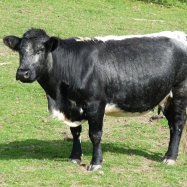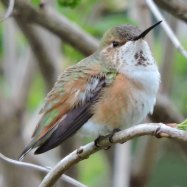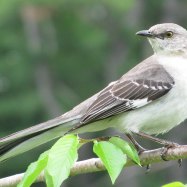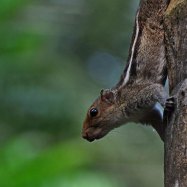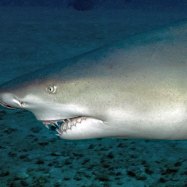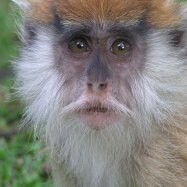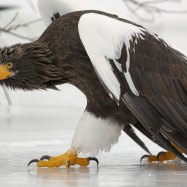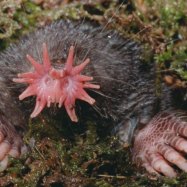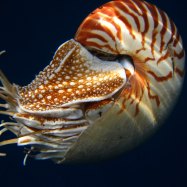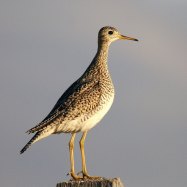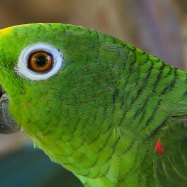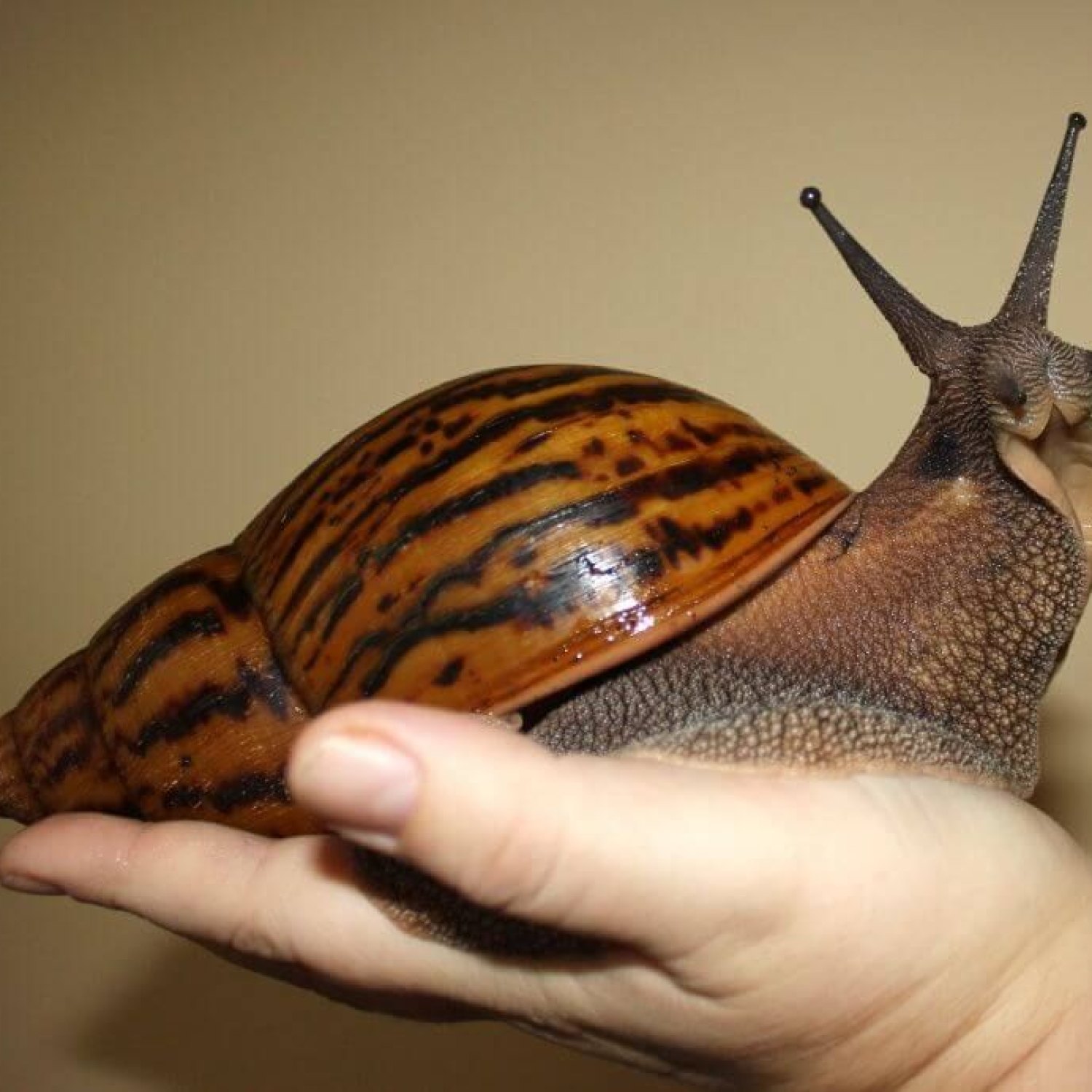
Giant African Land Snail
Up to 8 inches
The Giant African Land Snail, found in gardens, forests, and plantations, is a fascinating creature with a coiled shell and soft body. Growing up to 8 inches long, this member of the Achatinidae family is a popular pet and is known for its unique color variations. #GiantAfricanLandSnail #Achatinidae #wildlife #animals #nature
Animal Details Summary:
Common Name: Giant African Land Snail
Kingdom: Animalia
Habitat: Terrestrial
The Remarkable Adaptations of the Giant African Land Snail
Nature is truly remarkable, and the Giant African Land Snail is a prime example. This fascinating creature, formally known as Achatina fulica but commonly referred to as the Giant African Land Snail, is a species of snail found in the tropical and subtropical regions of East Africa. Unlike many other snail species, the Giant African Land Snail has adapted to various habitats and environments, making it a truly remarkable creature to study and admire.The Anatomy of the Giant African Land Snail
Before we delve into the adaptations of the Giant African Land Snail, let's first take a closer look at its physical structure Giant African Land Snail. The Giant African Land Snail belongs to the Kingdom Animalia, Phylum Mollusca, Class Gastropoda, and Order Stylommatophora. It is a member of the Achatinidae family, which comprises over 200 species of land snails.The Giant African Land Snail is a terrestrial animal, meaning it lives primarily on land, and has a soft body with a coiled shell. The shell can reach up to 8 inches in length, making it the largest land snail in the world. The color of the shell can vary from brown to gray, and there is also a rare albino variant. The soft body of the snail is mainly covered in mucus, which helps to keep its skin moist and protects it from drying out.
Feeding Habits of the Giant African Land Snail
The Giant African Land Snail is known for its herbivorous diet, meaning it primarily eats plants. Its mouth is equipped with a ribbon-like tongue, called a radula, which has tiny, sharp teeth used for scraping and grinding food. This unique adaptation allows the snail to consume a wide range of plant matter, from leaves and fruits to decomposing organic material Galapagos Tortoise.Interestingly, the Giant African Land Snail has also been observed eating calcium-rich soil and limestone to supplement its diet and strengthen its shell. This adaptation is crucial as the shell protects the snail's soft body from predators and environmental hazards.
Adaptations for Survival
The Giant African Land Snail has developed many adaptations to survive in its varied habitats and environments. Let's explore some of the most remarkable ones.Mucus Production for Moisture Retention
As mentioned earlier, the Giant African Land Snail produces copious amounts of mucus to cover its soft body. This mucus serves a crucial purpose, helping to retain moisture and protect the snail from dehydration. In addition, the mucus aids the snail in movement, allowing it to glide effortlessly over rough surfaces.
Hibernation to Conserve Energy
In areas with dry seasons, the Giant African Land Snail has an incredible ability to sense changing environments and adjust its behavior accordingly. When the season becomes too hot and dry, the snail retreats into its shell and seals the opening with a layer of mucus. This adaptation helps to conserve moisture and energy, allowing the snail to enter a state of hibernation until the conditions improve.
Camouflage for Protection
Being a slow-moving creature, the Giant African Land Snail is vulnerable to predators such as birds, reptiles, and mammals. To protect itself, the snail has developed adaptations for camouflage. Its shell has a brown and gray coloration, blending in with the surrounding vegetation and making it difficult to spot. The snail also has the ability to retract into its shell when threatened, becoming almost invisible.
Reproductive Adaptations
The Giant African Land Snail has a unique reproductive cycle, with individuals being hermaphroditic, meaning they possess both male and female reproductive organs. However, they still require a mate to reproduce and engage in a fascinating mating ritual involving the exchange of sperm. Once fertilization occurs, the snail can lay hundreds of eggs in a single batch, ensuring the survival of their species.
The Impact of Human Interference
The Giant African Land Snail has been introduced to many parts of the world outside its native range in East Africa. As a result, they have become classified as an invasive species in many countries, causing harm to local ecosystems and agriculture.This is due in part to the Giant African Land Snail's rapid reproduction rate, with a single snail able to produce hundreds of offspring in a short period. They also have a voracious appetite and can quickly decimate crops and vegetation, causing significant damage to the local flora and fauna. This has led to efforts to control and eradicate the species in many areas.
The Future of the Giant African Land Snail
Despite being viewed as a pest in some areas, the Giant African Land Snail continues to thrive and adapt in its native and introduced habitats. Its unique adaptations have made it a successful and influential species, with its ability to survive and reproduce in a wide range of environments.However, it is essential to remember that human interference has undoubtedly impacted the Giant African Land Snail's natural habitat and behavior. It is our responsibility to protect and preserve these creatures and their unique adaptations for future generations to admire.
In Conclusion
In summary, the Giant African Land Snail is a remarkable creature with various adaptations that enable it to survive and thrive in different habitats and environments. From its mucus production for moisture retention to its hibernation abilities and unique reproductive cycle, this snail has many fascinating features.While it is essential to admire and study these creatures, it is also crucial to remember our impact on their natural habitats and behavior. By understanding and respecting these adaptations, we can ensure the future survival and coexistence of the Giant African Land Snail and other remarkable species in our world.

Giant African Land Snail
Animal Details Giant African Land Snail - Scientific Name: Achatina fulica
- Category: Animals G
- Scientific Name: Achatina fulica
- Common Name: Giant African Land Snail
- Kingdom: Animalia
- Phylum: Mollusca
- Class: Gastropoda
- Order: Stylommatophora
- Family: Achatinidae
- Habitat: Terrestrial
- Feeding Method: Herbivorous
- Geographical Distribution: Tropics and subtropics
- Country of Origin: East Africa
- Location: Gardens, forests, plantations
- Animal Coloration: Brown, gray, or albino
- Body Shape: Coiled shell and soft body
- Length: Up to 8 inches
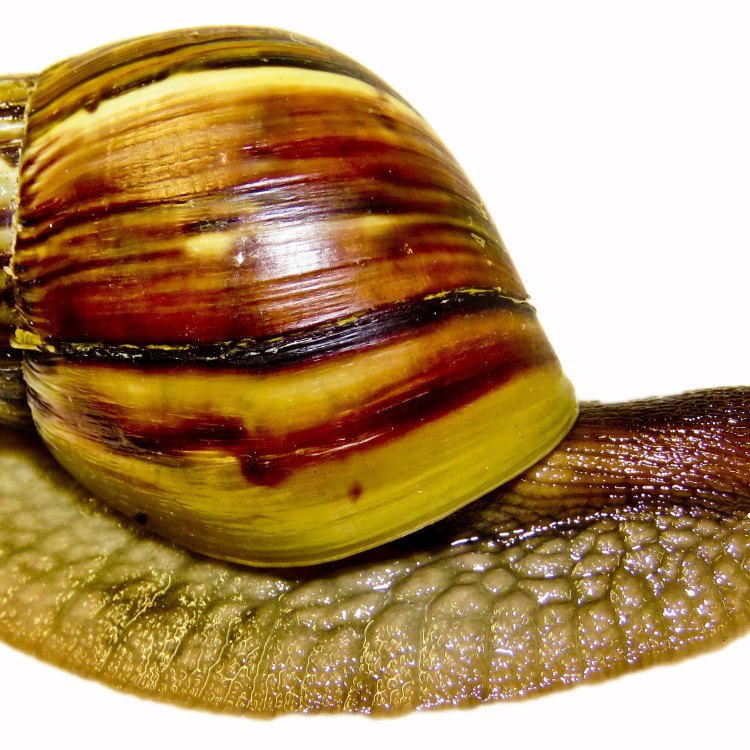
Giant African Land Snail
- Adult Size: 4-6 inches in length
- Average Lifespan: 5-7 years
- Reproduction: Hermaphroditic
- Reproductive Behavior: Lay eggs in soil
- Sound or Call: None
- Migration Pattern: Non-migratory
- Social Groups: Solitary
- Behavior: Nocturnal
- Threats: Habitat destruction, pollution, overcollection
- Conservation Status: Not assessed
- Impact on Ecosystem: Can be a pest in agricultural areas
- Human Use: As pets and for food
- Distinctive Features: Large size and coiled shell
- Interesting Facts: Can lay up to 1,200 eggs per year
- Predator: Birds, rodents, and snakes
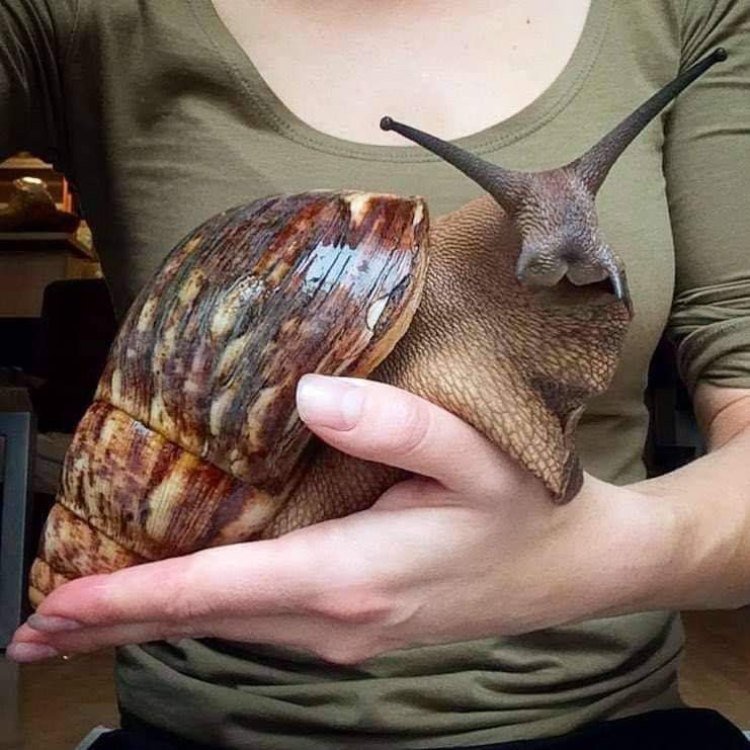
Achatina fulica
The Fascinating Giant African Land Snail: A Unique Species with Surprising Qualities
The Giant African Land Snail, scientifically known as Achatina fulica, is a species that has attracted a lot of attention in recent years due to its large size and intriguing characteristics. This land snail, which is native to East Africa, has become a popular pet among exotic animal enthusiasts around the world. However, there is much more to these creatures than meets the eye. From their unusual reproductive behavior to their role in the ecosystem, the Giant African Land Snail has many surprising qualities that make it a truly fascinating species PeaceOfAnimals.Com.Size and Lifespan
The most notable feature of the Giant African Land Snail is, of course, its size. These creatures can grow up to 4-6 inches in length, making them one of the largest species of land snail in the world. Their size is further highlighted by their coiled shell, which can grow to be over 7 inches in diameter. This makes them not only visually impressive but also relatively heavy for a snail, with some individuals weighing up to 2 pounds.
In addition to their impressive size, Giant African Land Snails also have a relatively long lifespan for a mollusk. On average, these snails can live for 5-7 years in captivity. In the wild, their lifespan can vary depending on environmental conditions, but they typically live for around 7 years. This is much longer than other snail species, which only live for a few years at most.
Reproduction and Behavior
One of the most fascinating aspects of Giant African Land Snails is their unique reproductive behavior Goldcrest. These snails are hermaphroditic, meaning they have both male and female reproductive organs. This allows them to reproduce with any other snail they come into contact with. However, they still typically mate with another snail to fertilize their eggs.
Once fertilized, these snails lay their eggs in the soil, typically burying them at a depth of 1-2 inches. A female snail can lay up to 1,200 eggs per year, with each clutch containing around 100 eggs. This high reproductive rate is one of the factors that have contributed to the widespread distribution of these snails around the world.
Giant African Land Snails are nocturnal creatures, meaning they are most active at night. During the day, they prefer to hide under leaves or in burrows they have dug themselves. This behavior helps them avoid predators and also allows them to stay cool in hotter climates. In colder climates, they may hibernate during the winter months.
Threats and Conservation Status
Unfortunately, the Giant African Land Snail is facing significant threats in its natural habitat. Some of the main threats include habitat destruction, pollution, and overcollection for the pet trade. These snails are also considered an invasive species in many parts of the world, where they can cause damage to crops and gardens. Due to these threats, the conservation status of these snails has not yet been assessed by the International Union for Conservation of Nature (IUCN).
Impact on Ecosystem
As mentioned earlier, Giant African Land Snails are considered an invasive species in many parts of the world. In their natural habitat, they play an essential ecological role in breaking down decaying plant material and enriching the soil. However, when introduced to new environments, they can have a detrimental impact on the ecosystem. In some cases, they can outcompete native snail species and disrupt the balance of plant and animal populations. In extreme cases, their voracious appetite and ability to reproduce quickly can result in widespread damage to crops and agricultural areas.
Human Use and Distinctive Features
Despite their potential negative impacts, Giant African Land Snails have been used by humans for various purposes. In some African countries, these snails are considered a delicacy and are consumed as food. They are also used in traditional medicine, with some cultures believing that they have healing properties.
In the pet trade, these snails have become quite popular due to their unique size and appearance. However, it is essential to note that they require specific care and can be challenging to look after properly. Many countries have also banned the import and export of these snails to prevent their spread to new environments.
Aside from their large size, Giant African Land Snails have other distinctive features that make them stand out among other snail species. As mentioned earlier, their coiled shell can grow up to 7 inches in diameter, and it is spiral in shape, unlike the more typical dome shape of other snail shells. Their shells also have a pearly appearance and come in a variety of colors, including brown, orange, and pink.
Interesting Facts
Despite being a relatively well-known species, there are still many fascinating facts about the Giant African Land Snail that may surprise you. For example, these snails are not entirely silent creatures. When threatened, they can create a rasping sound by rubbing their foot against their shell. This sound serves as a warning to potential predators to stay away.
Additionally, their ability to self-fertilize means that one snail can potentially start a whole population on its own. This has happened in some cases when these snails have escaped captivity and have been introduced to new environments.
Predators
Like any other animal, Giant African Land Snails have natural predators that they must defend themselves against. Some of these predators include birds, rodents, and snakes. In their native habitat, these snails have evolved several defense mechanisms, such as their hard shells and their slime that can make them difficult to grab onto. They also have a strong sense of smell, which helps them detect predators and escape danger.
In Conclusion
The Giant African Land Snail is a truly unique and fascinating species with many surprising qualities. From their large size and coiled shell to their unique reproductive behavior and impact on the ecosystem, these snails have captured the curiosity of many people around the world. However, it is also important to recognize and address the potential threats they pose when introduced to new environments. By understanding and respecting the natural behaviors of these creatures, we can appreciate their beauty and contribute to their conservation efforts.
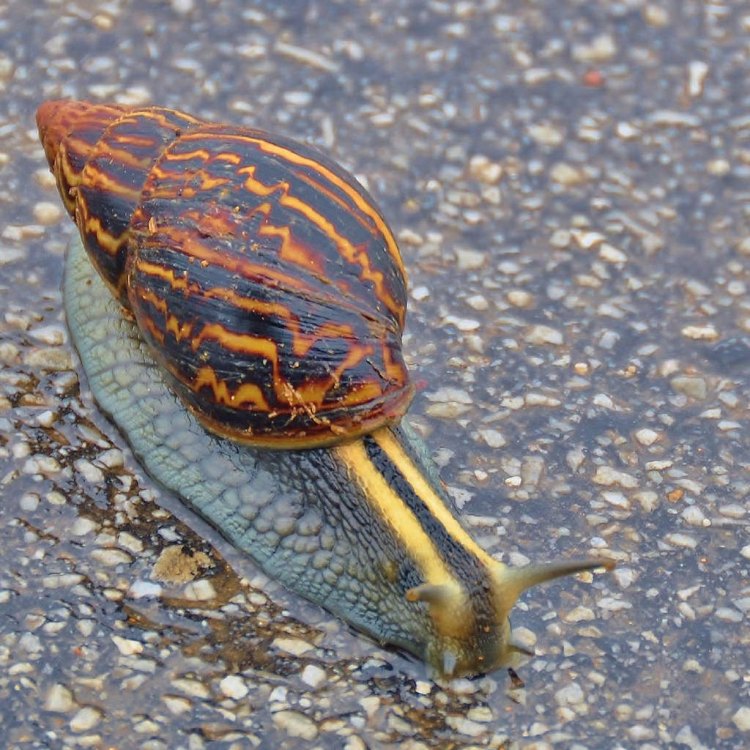
The Remarkable Adaptations of the Giant African Land Snail
Disclaimer: The content provided is for informational purposes only. We cannot guarantee the accuracy of the information on this page 100%. All information provided here may change without prior notice.

